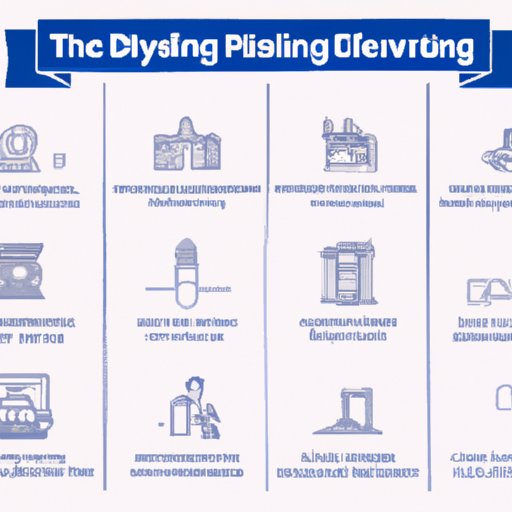
An Overview of the History of 3D Printing
3D printing is a relatively new technology that is quickly becoming an integral part of production in many industries. By using a 3D printer, objects can be created layer by layer from a digital file. This technology has been around for several decades, and its development has had a major impact on industry and everyday life. But when was 3D printing invented? Let’s explore the history of 3D printing and how it has evolved since its inception.
The Early Days of 3D Printing: When Was It Invented?
The first 3D printer was invented in 1984 by Charles Hull, who coined the term “stereolithography.” This was the first type of 3D printing technology and it allowed users to create physical objects from a digital file. The process involved a laser beam that cured layers of photopolymer resin, creating a 3D object. Since then, 3D printing has come a long way, with the development of various types of 3D printers and materials.
In the years since its invention, 3D printing has become increasingly accessible and user-friendly. Initially, 3D printing was used primarily in industrial settings, but now it can be found in homes, schools, and businesses. 3D printing has revolutionized the way we create and manufacture products, allowing us to produce complex geometries that would otherwise be impossible to make.

Examining the Impact of 3D Printing on Industry and Everyday Life
In the past few decades, 3D printing has made a huge impact on industry and everyday life. In industry, 3D printing is being used to create prototypes, tools, and parts for machines. It has enabled manufacturers to reduce costs and time associated with traditional manufacturing processes. For example, according to a study conducted by HP, 3D printing has enabled companies to reduce the cost of prototyping by up to 70%, while reducing time to market by 50%.
In addition to its use in industry, 3D printing is also being used in everyday life. Consumers are now able to purchase 3D printers and print their own products at home. This has opened up a whole new world of possibilities, from customizing existing products to creating entirely new ones. 3D printing has also enabled people to produce personalized items such as jewelry, toys, and home decor.
A Timeline of 3D Printing: From Inception to Present Day
Since its invention in 1984, 3D printing has gone through several stages of development. Here is a timeline of the most important milestones in the evolution of 3D printing technology:
- 1984: Charles Hull invents stereolithography.
- 1989: 3D Systems releases the SLA-1, the first commercial 3D printer.
- 1992: Fused Deposition Modeling (FDM) is invented by Stratasys.
- 1999: Selective Laser Sintering (SLS) is invented by EOS.
- 2005: Objet Geometries releases the Connex500, the first multi-material 3D printer.
- 2008: Desktop 3D printing becomes available with the release of the MakerBot Cupcake CNC.
- 2014: Carbon3D releases the CLIP 3D printing technology.
- 2017: Desktop Metal unveils its metal 3D printing system.
- 2020: HP launches its first Multi Jet Fusion 3D printer.
What Are the Benefits of 3D Printing and How Did It Come to Be?
3D printing has revolutionized the way we produce and manufacture products, offering numerous benefits to industry and everyday life. In industry, 3D printing has enabled companies to reduce costs and time associated with traditional manufacturing processes. Additionally, 3D printing has enabled companies to quickly and easily create complex geometries that would otherwise be impossible to make.
In everyday life, 3D printing has enabled consumers to create customized products that would otherwise be difficult or impossible to find. It has also enabled people to produce personalized items such as jewelry, toys, and home decor. Additionally, 3D printing has enabled people to produce items for educational, medical, and scientific purposes.
Conclusion
3D printing is a revolutionary technology that has changed the way we produce and manufacture products. Since its invention in 1984, 3D printing has gone through several stages of development, from the first 3D printer to the latest advancements in metal 3D printing. 3D printing has enabled companies to reduce costs and time associated with traditional manufacturing processes, and it has enabled consumers to create customized products that would otherwise be difficult or impossible to find. As 3D printing technology continues to evolve, it will no doubt have a major impact on the future of industry and everyday life.
(Note: Is this article not meeting your expectations? Do you have knowledge or insights to share? Unlock new opportunities and expand your reach by joining our authors team. Click Registration to join us and share your expertise with our readers.)
